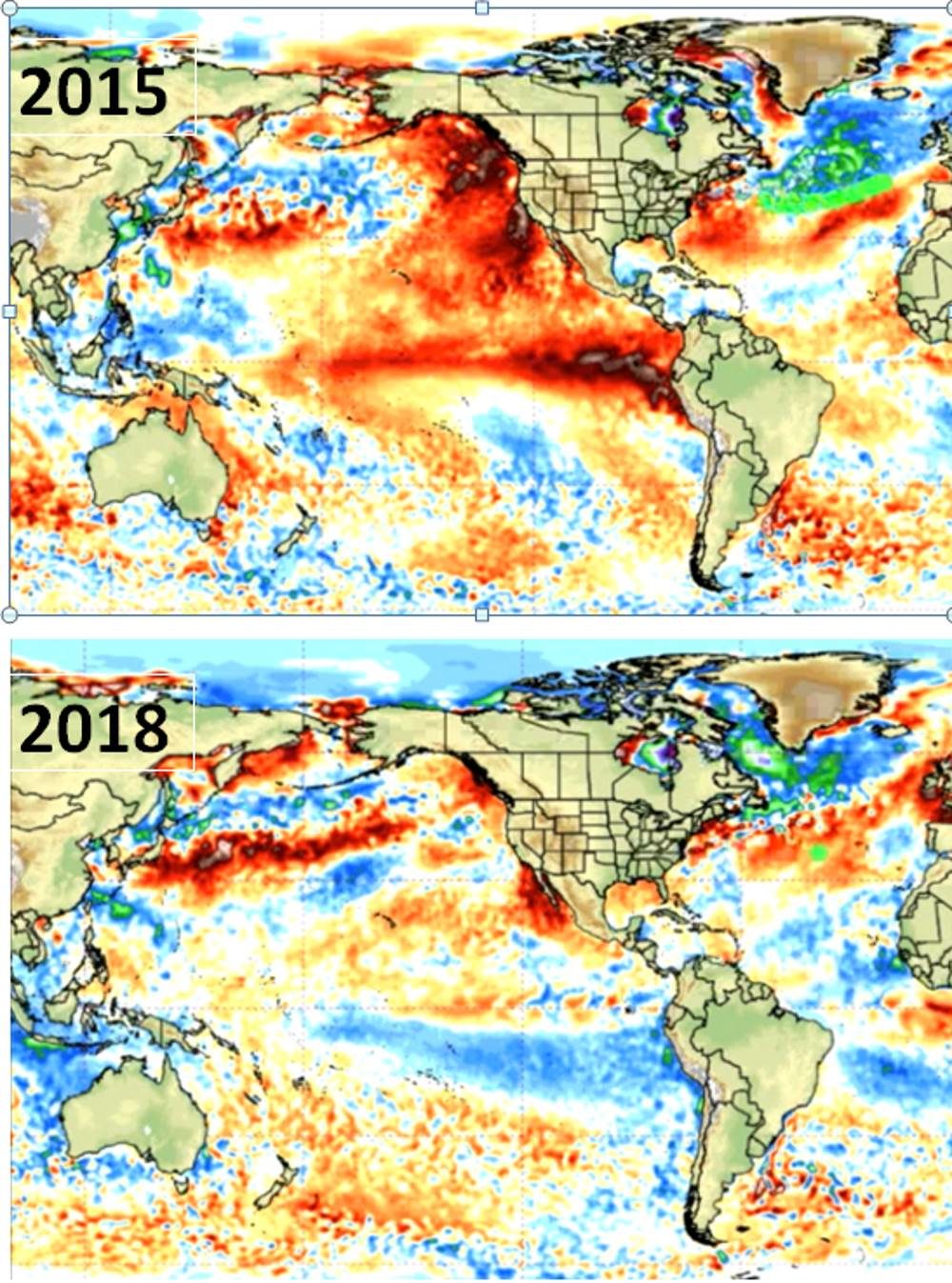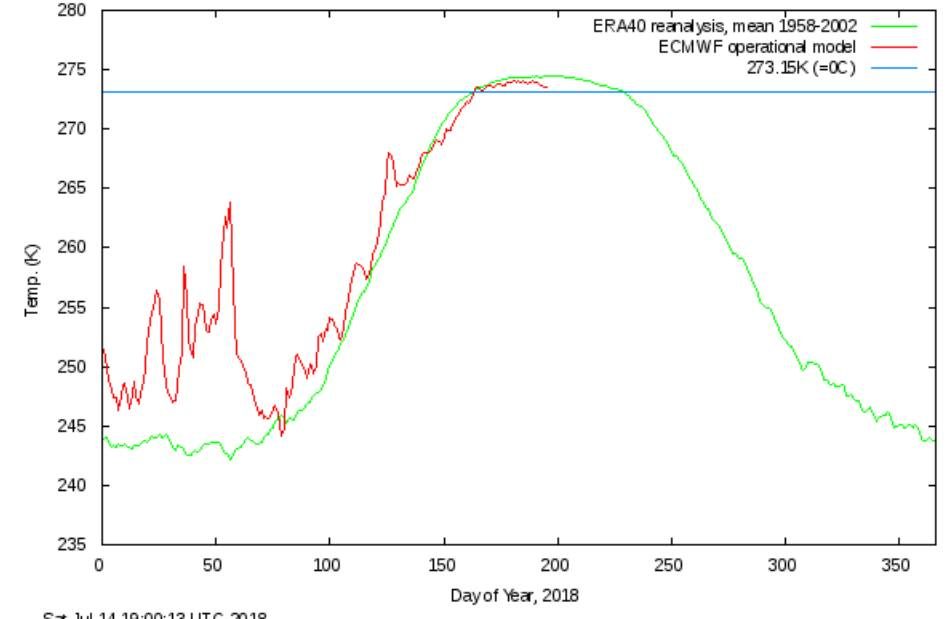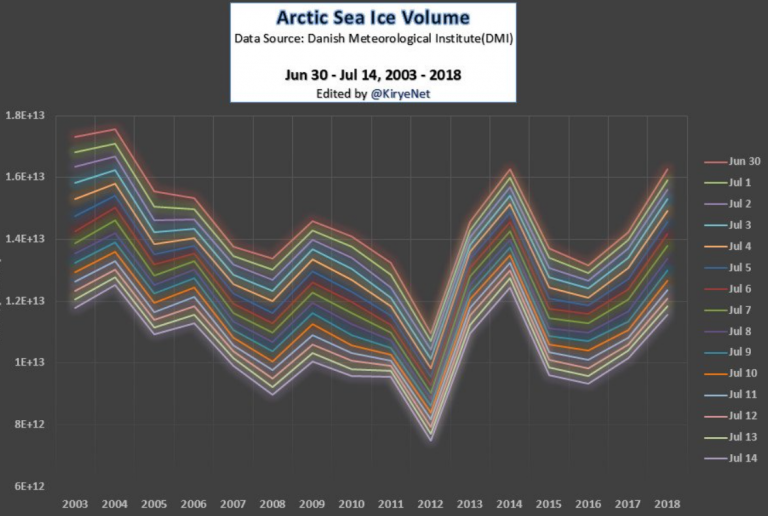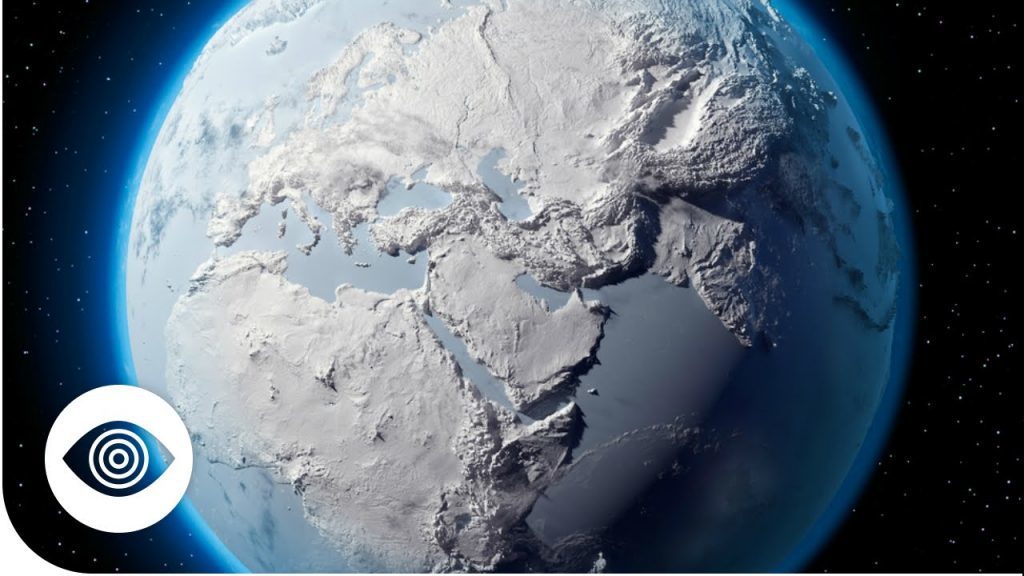Our Earth is cooling
First at his most recent Saturday Summary, the 40-year meteorologist first warns that in-close developing hurricanes of the sort seen in the 1930s are a risk to the US East Coast this year, due the current Atlantic temperature pattern. The reason has nothing to do with CO2 in the atmosphere, but because of natural sea surface temperature cycles.
Next Joe Bastardi illustrates the stark sea surface cooling the globe has seen over the recent years. The following two charts show the "pretty dramatic" cooling that has occurred over the past three years, 2015 vs 2018. Bastardi calls it "a pretty big flip" and "a pretty dramatic turnaround":

Joe Bastardi notes that according to the Danish DMI, Arctic temperature has been below normal over the entire summer:

The cold polar temperatures are naturally having an impact on Arctic snow and ice. Japanese blogger Kirye tweeted here that Arctic sea ice volume is currently at the 4th highest level since 2003, thus defying the dire alarmist predictions of Arctic sea ice disappearing by now. Arctic sea ice volume (m3) has eased off from third place and is now at the 4th highest level since 2003, and showing an upward recovering trend over the past decade:

Also at the 11:50 mark of his Saturday Summary video, Joe shows that Arctic sea ice extent is well above the levels seen over the previous years.
Those are pretty interesting examples of a cooling Earth, don't you think?




Reader Comments
to our Newsletter